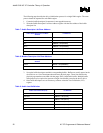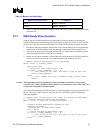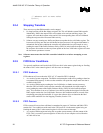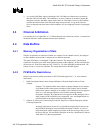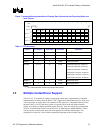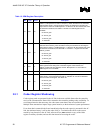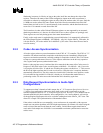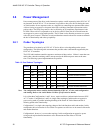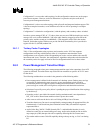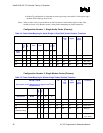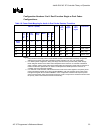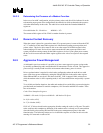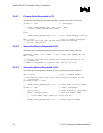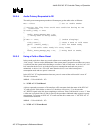
Intel® ICH5 AC ’97 Controller Theory of Operation
R
30 AC ’97 Programmer’s Reference Manual
3.6 Power Management
Power management of the driver/codec interaction requires careful sequencing in the ICH5 AC ’97
environment. In the ICH5 AC ’97 environment it is possible to have two drivers sharing the same
AC-link interface for two separate codecs or a single driver controlling two separate audio codecs.
A driver forcing an aggressive sleep state in the link could have functional repercussions on the
pairing codec. The Deep Sleep state in a device following ACPI compliance requirements is the
D3 State. When a driver is requested to set its device to the D3 State, the driver should enter the
most aggressive power saving mode possible. The D3 State is also often the precursor to a system
wide core power removal. Therefore several considerations must be taken into account to maintain
the device functionality and wake-up capability.
3.6.1 Codec Topologies
The procedure to be taken by an ICH5 AC ’97 device driver varies depending on the system
configuration. The following table enumerates the possible codec combinations supported by the
ICH5 AC ’97 controller.
The ICH5 audio/modem controller supports a maximum of three codecs. If there is more than one
audio codec, then the remaining codecs must proceed to the different power states at the same
time. The following system implementations are possible.
Table 13. Dual Codecs Topologies
Config.
1 AC (Primary)
2 MC (Primary)
3 AMC (Primary) Possible D3 state interactions
4 AC (Primary) + MC (Secondary) Possible D3 State interactions
5 AC (Primary) + AC (Secondary) Driver interaction concern
6 AMC (Primary) + AC (Secondary) Possible D3 State Interactions
7 AC (Primary) + AMC (Secondary) Possible D3 State Interactions
Note: The configuration above could be further limited by ICH5 AC ’97 riser card configuration
and loading. Refer to the Audio/Modem I/O Riser Specification for details.
It is evident that Configurations 1 and 2, above, require no driver synchronization between ICH5
AC ’97 codecs. Configuration 1 and 2 are single codec topologies, and therefore an aggressive
power saving mode is possible including disabling of the actual AC-link without concern of
affecting paired codec functionality.
Configuration 3 is a single codec topology that provides both functions audio and modem. In this
configuration driver interaction is also critical if a separate set of drivers are in control of the audio
and modem functions.
Configuration 4, however, is a two-codec topology. In this configuration an aggressive power
saving mode requires detailed attention to cross interactions and the effect on AC-link
functionality.



